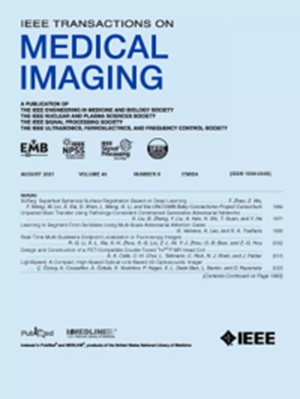基于细粒度可解释性嵌入的可信多视图表示。
IF 9.8
1区 医学
Q1 COMPUTER SCIENCE, INTERDISCIPLINARY APPLICATIONS
引用次数: 0
摘要
多组学共同学习是一种强大的分析范式,极大地促进了生物医学研究。然而,由于多组学数据的信息多样性和复杂关系,朴素的多视图学习方法通常会遇到与感兴趣的疾病无关的虚假相关性和偏见签名。因此,学习表征和跨组学关联不能转化为疾病预测的临床知识。当临床数据有限和稀缺时,这个问题变得尤为严重。为了解决这个问题,我们提出了一种新颖而强大的方案,称为因果关系驱动的可信多视图映射方法(Cad-TMVP)。具体来说,我们设计了一个精细的多向映射模块来提取不同模式的共表达模式,并捕获细粒度的可解释性因素。我们还精心设计了动态机制,以促进自适应损失期重加权和多种模式的可靠集成。Cad-TMVP通过开发同时执行自动诊断和结果解释的合作学习模块来增强下游任务。此外,我们开发了一种高效的搜索策略和支持计算,以减少高计算负担,使我们的方法切实可行。我们对不同类型的多组学数据进行了广泛的实验。所提出的方法在各种环境中建立了新的最先进的结果,同时保持了良好的可解释性。因此,它为可信的多模态学习设定了一个潜在的新范式,并验证了其在实际生物医学应用中的灵活性和多功能性。本文章由计算机程序翻译,如有差异,请以英文原文为准。
Towards Trustworthy Multi-View Representation with Fine-Grained Explainability Embeddings.
Multiomics co-learning is a powerful analytical paradigm that has benefited biomedical studies substantially. However, due to the diverse information and complex relationships of multiomics data, naive multi-view learning methods usually run into spurious correlations and biased signatures irrelevant to the diseases of interest. Therefore, the learned representations and cross-omics associations cannot translate into clinical knowledge for disease prediction. This issue becomes particularly severe when clinical data are limited and scarce. To handle this issue, we propose a novel and powerful scheme, referred to as the Causality-driven Trustworthy Multi-View maPping approach (Cad-TMVP). Specifically, we design a fined multi-directional mapping module to extract co-expression patterns across different modalities and capture fine-grained interpretability factors. We also meticulously design dynamic mechanisms to facilitate adaptive loss-term reweighting and trustworthy integration of multiple modalities. Cad-TMVP enhances downstream tasks by developing a cooperative learning module that simultaneously performs automated diagnosis and result interpretation. Furthermore, we develop an efficient search strategy and support computation to reduce the high computational burden, making our approach practicable. We conduct extensive experiments on different types of multiomics data. The proposed method establishes new state-of-the-art results in various settings while maintaining excellent interpretability. Thus, it sets a potentially newparadigm in trustworthy multi-modal learning and verifies its flexibility and versatility in real biomedical applications.
求助全文
通过发布文献求助,成功后即可免费获取论文全文。
去求助
来源期刊

IEEE Transactions on Medical Imaging
医学-成像科学与照相技术
CiteScore
21.80
自引率
5.70%
发文量
637
审稿时长
5.6 months
期刊介绍:
The IEEE Transactions on Medical Imaging (T-MI) is a journal that welcomes the submission of manuscripts focusing on various aspects of medical imaging. The journal encourages the exploration of body structure, morphology, and function through different imaging techniques, including ultrasound, X-rays, magnetic resonance, radionuclides, microwaves, and optical methods. It also promotes contributions related to cell and molecular imaging, as well as all forms of microscopy.
T-MI publishes original research papers that cover a wide range of topics, including but not limited to novel acquisition techniques, medical image processing and analysis, visualization and performance, pattern recognition, machine learning, and other related methods. The journal particularly encourages highly technical studies that offer new perspectives. By emphasizing the unification of medicine, biology, and imaging, T-MI seeks to bridge the gap between instrumentation, hardware, software, mathematics, physics, biology, and medicine by introducing new analysis methods.
While the journal welcomes strong application papers that describe novel methods, it directs papers that focus solely on important applications using medically adopted or well-established methods without significant innovation in methodology to other journals. T-MI is indexed in Pubmed® and Medline®, which are products of the United States National Library of Medicine.
 求助内容:
求助内容: 应助结果提醒方式:
应助结果提醒方式:


